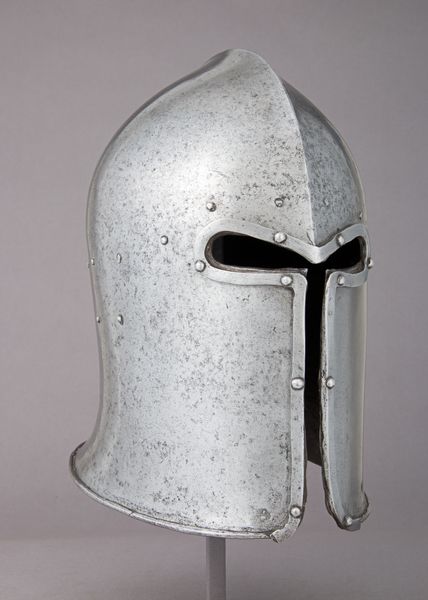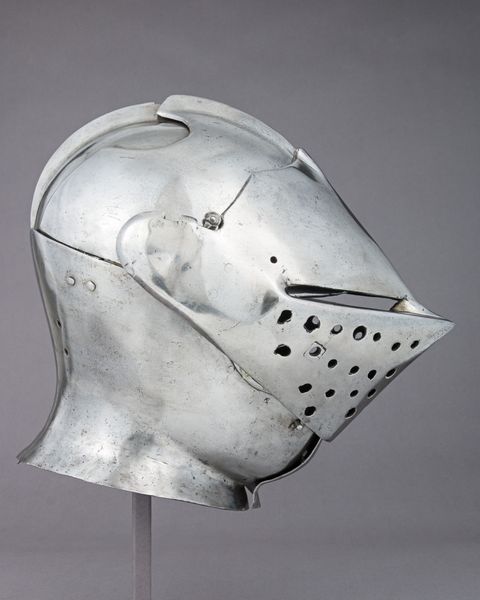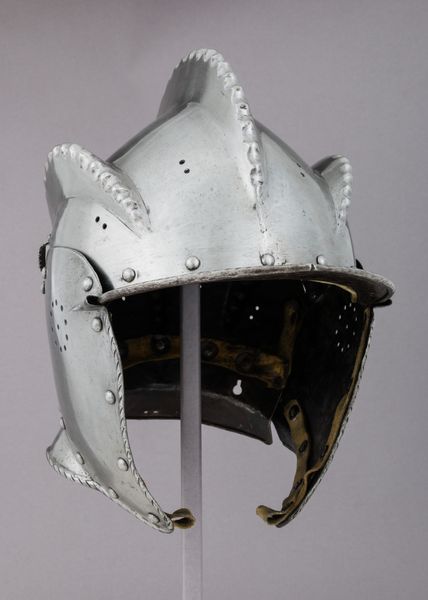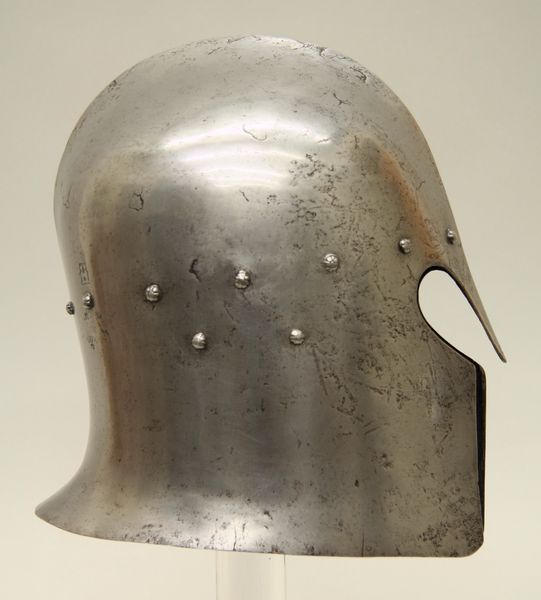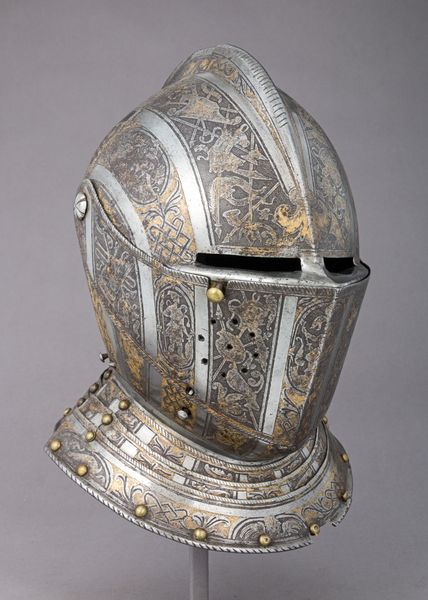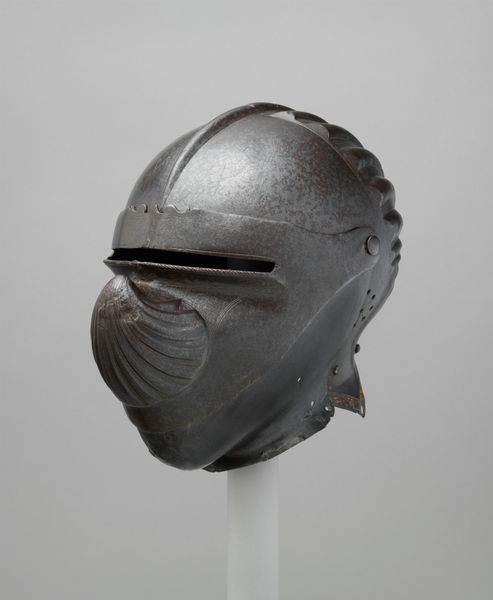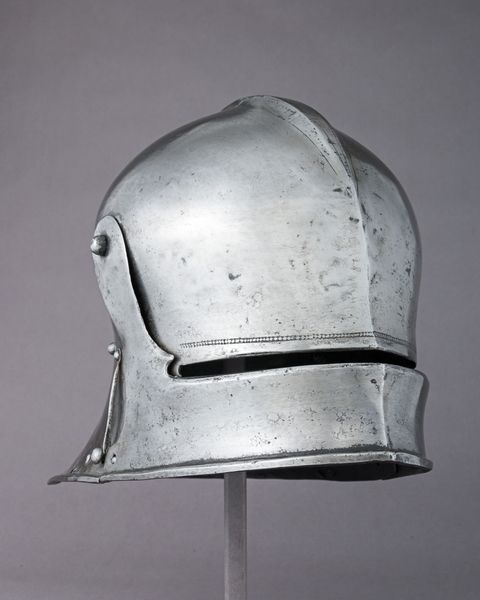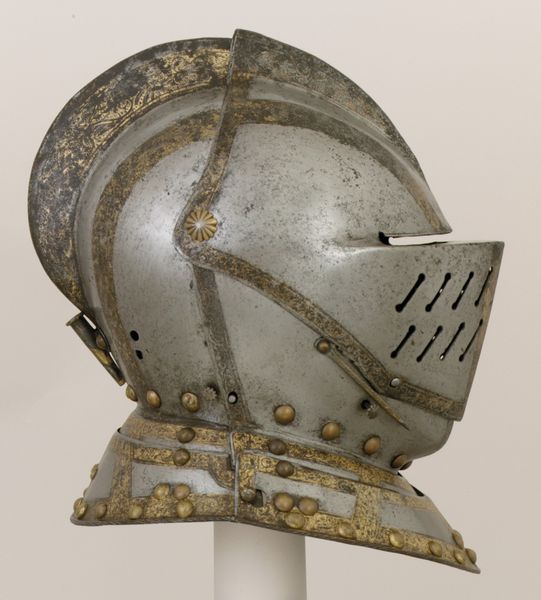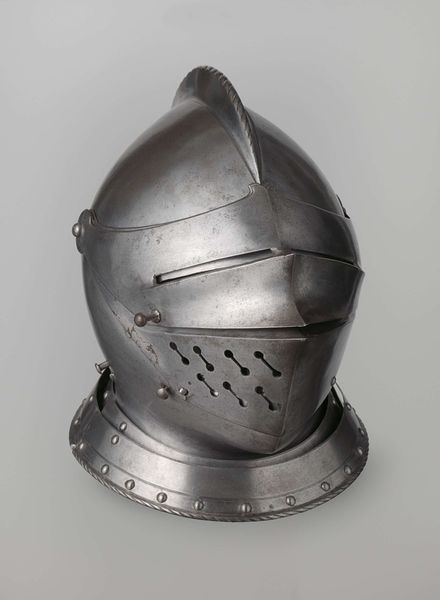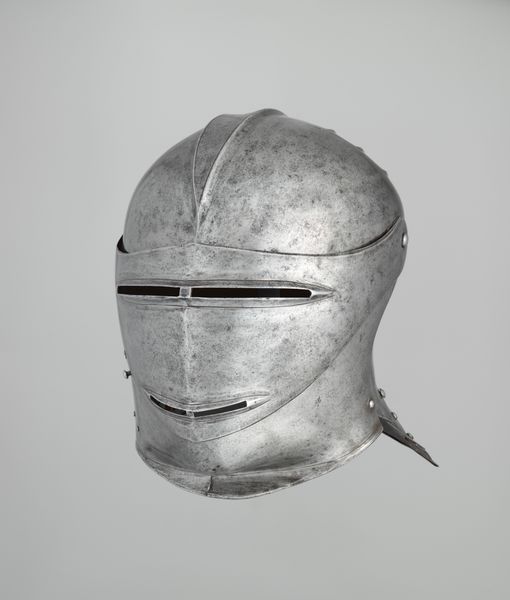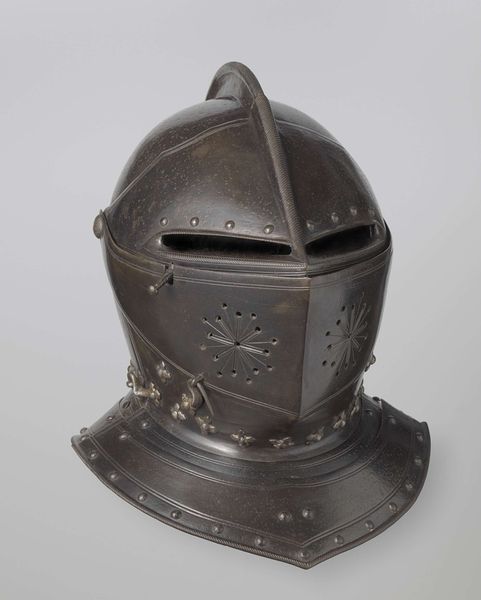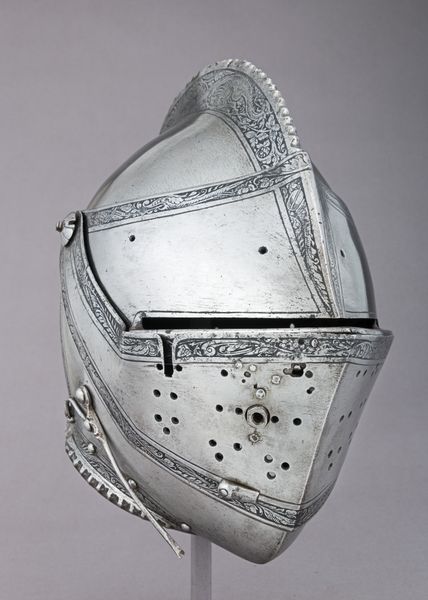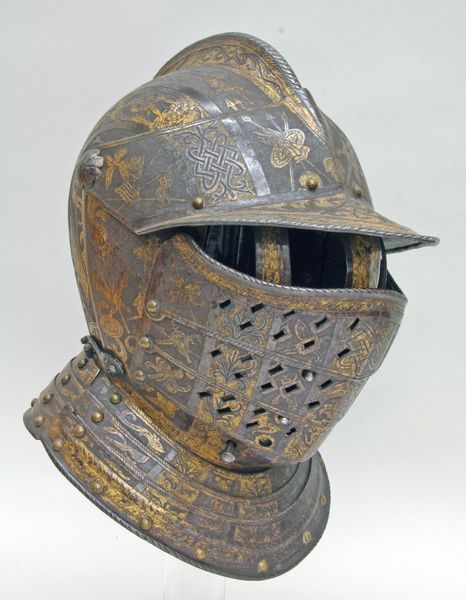
metal, sculpture
#
portrait
#
medieval
#
metal
#
sculpture
#
sculpture
#
armor
#
statue
Dimensions: H. 11 3/8 in. (28.9 cm); W. 7 7/8 in. (20 cm); D. 10 5/8 in. (27 cm); Wt. 5 lb. 4 oz. (2381 g)
Copyright: Public Domain
Curator: Here we have a "Barbute," dating from between 1435 and 1485. It's attributed to Jacopo da Cannobio, nicknamed Bichignola, and currently resides at the Metropolitan Museum of Art. Editor: Its polished steel surface immediately strikes me. The cool, metallic sheen and smooth, almost egg-like shape give it a strangely elegant yet imposing presence. Curator: This type of helmet offers a fascinating glimpse into the power dynamics and societal structures of medieval Europe. Armor wasn't merely protection; it was a statement of wealth, status, and martial prowess. Think about the intense gendered expectations surrounding knighthood, the visual spectacle of tournaments, and the political weight such symbols carried. Editor: Visually, the barbute's design is incredibly efficient. Note the narrow eye slit—a pure exercise in function dictating form. The smooth, rounded surfaces would deflect blows, while the close fit offers maximum protection. I'm also drawn to the rivets. They introduce small points of light, breaking up the surface and revealing the craftsmanship involved. Curator: Indeed. The individual who wore this helmet embodied a complex interplay of social roles, and these kinds of helmets, armor more generally, played an integral role. How might this armor impact his performance on the battlefield, how does it mark a man in distinction from others, including other genders and people who were poor. Editor: Exactly. The craftsmanship clearly reflects an understanding of both material and anatomy. I see the concision of its form in dialogue with its cultural, sociological milieu, just like the minimalist paintings of the 20th century operate as a reduction to pure form. Curator: These helmets underscore not only medieval society but the legacies of how the equipment of power resonates across history, reminding us of the importance of considering issues like patriarchy and class in our experience of visual culture. Editor: By focusing on design elements like shape, line, and texture we’ve unveiled the social values inscribed within this "Barbute." Curator: By exploring the social dimensions of such design and what it embodies.
Comments
No comments
Be the first to comment and join the conversation on the ultimate creative platform.
